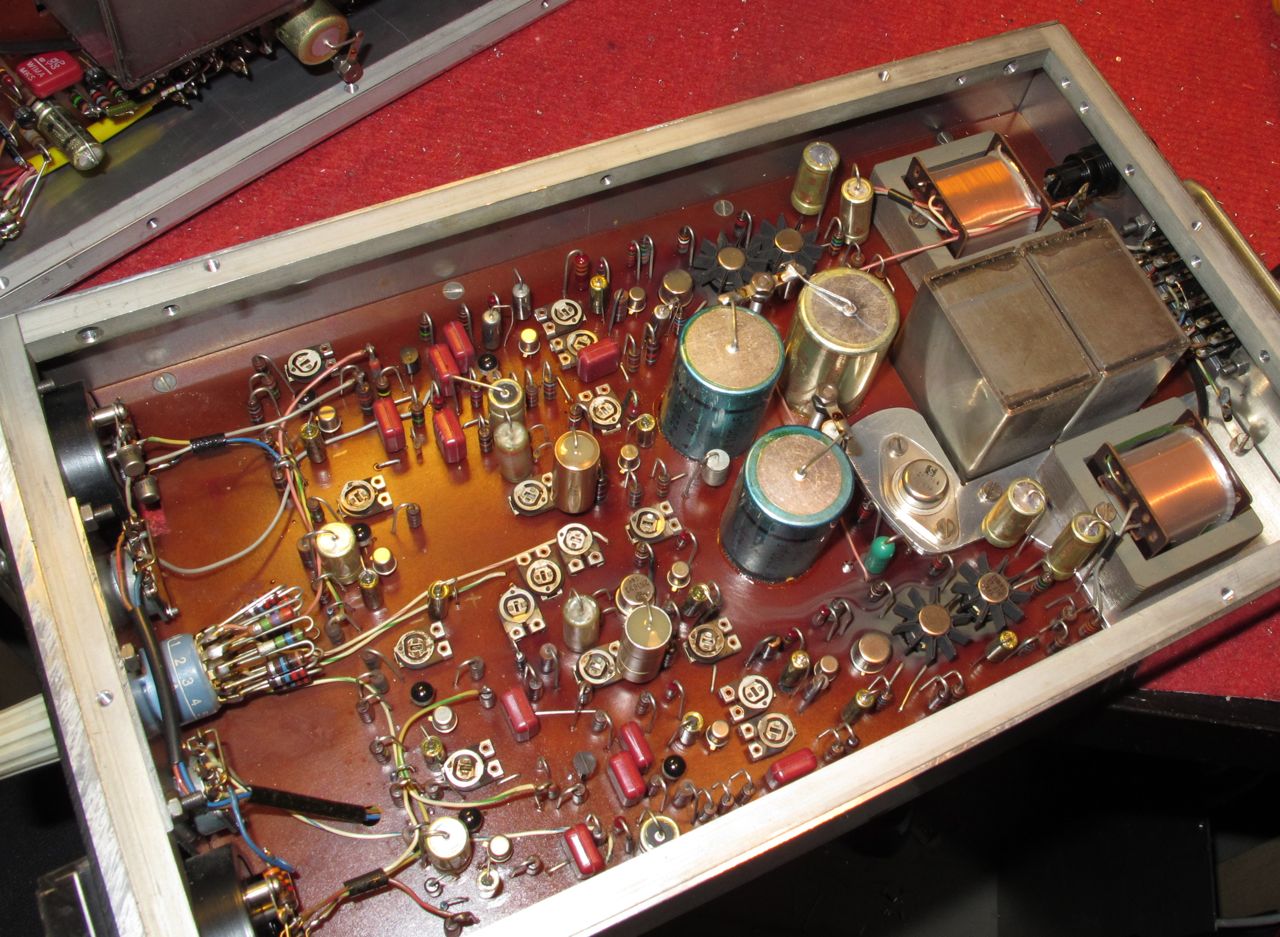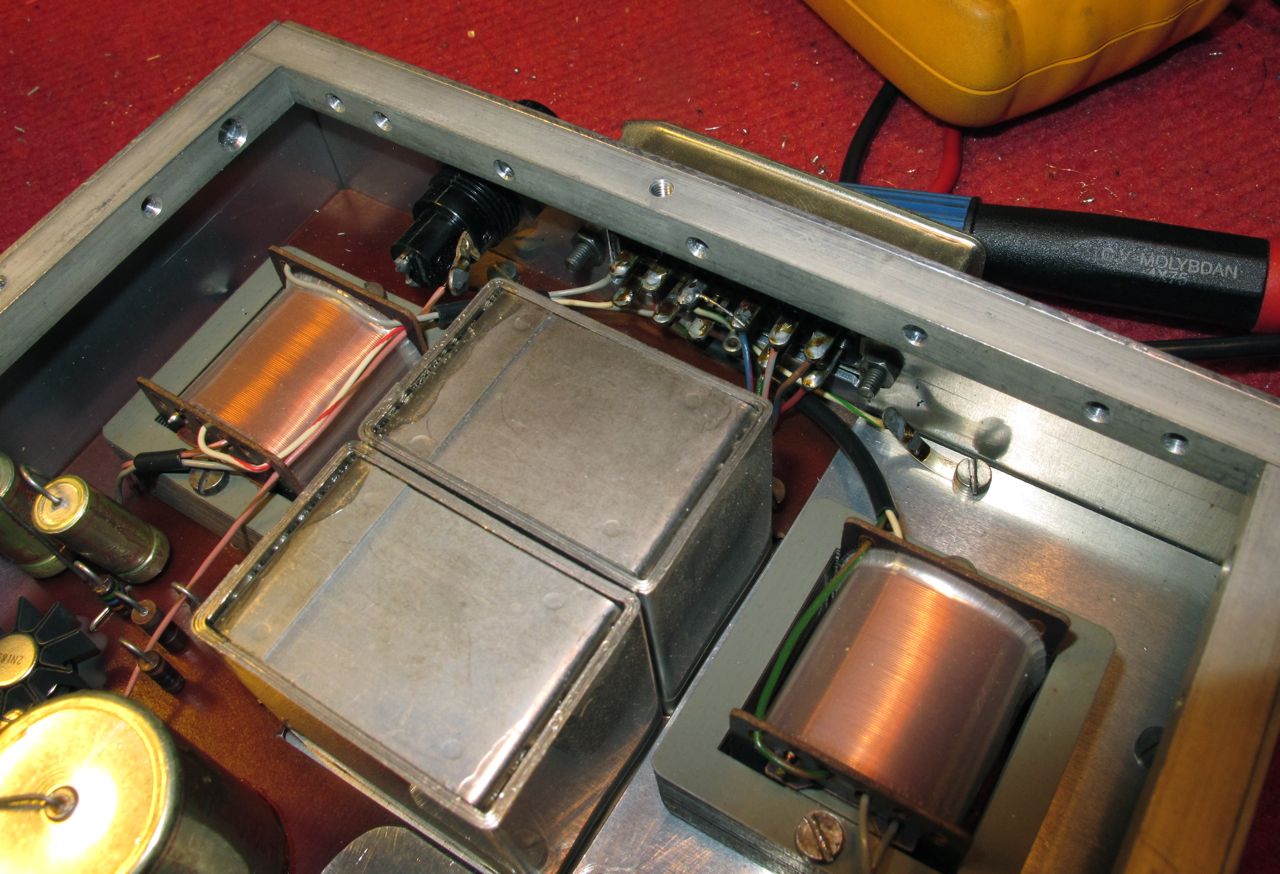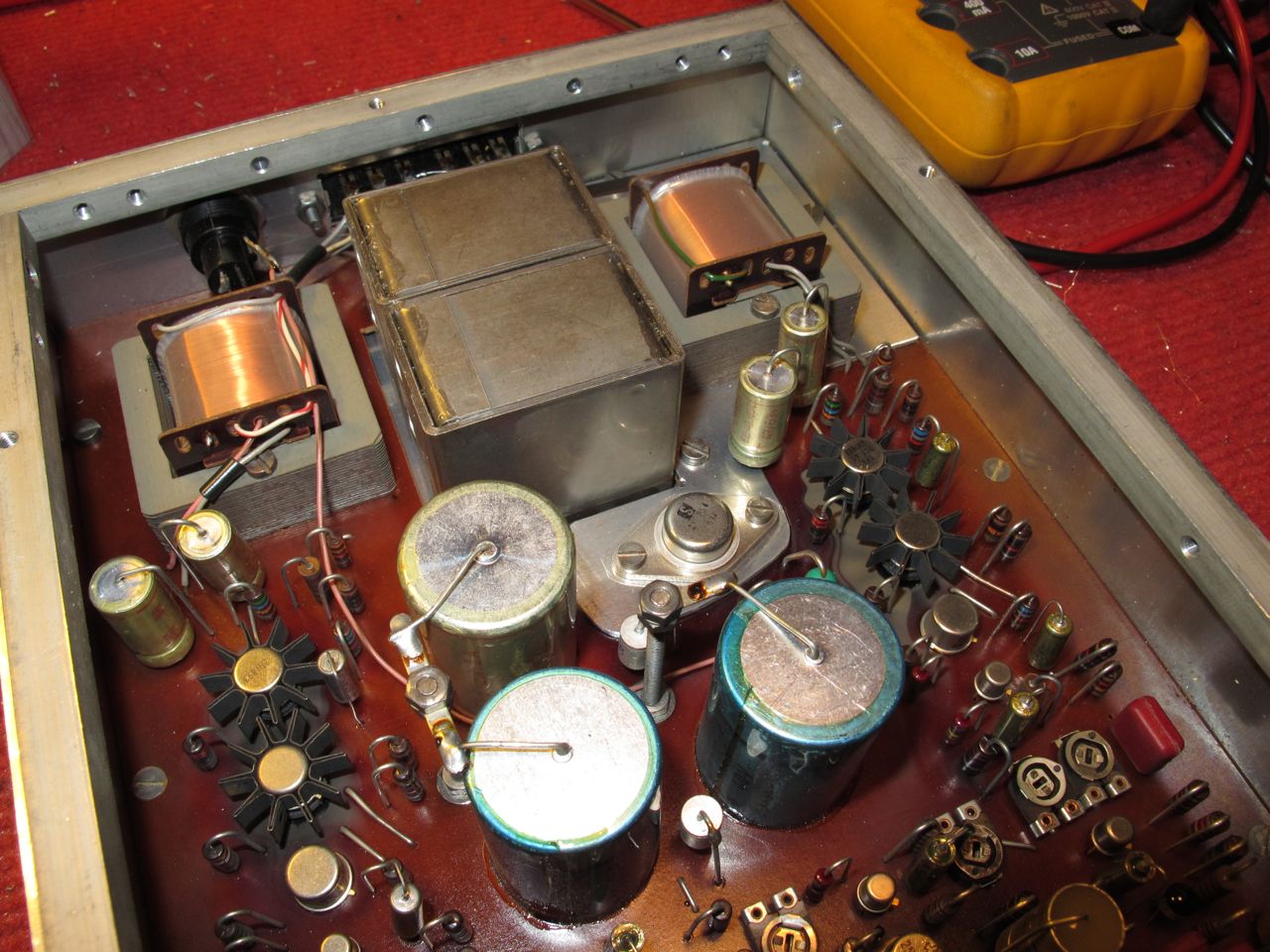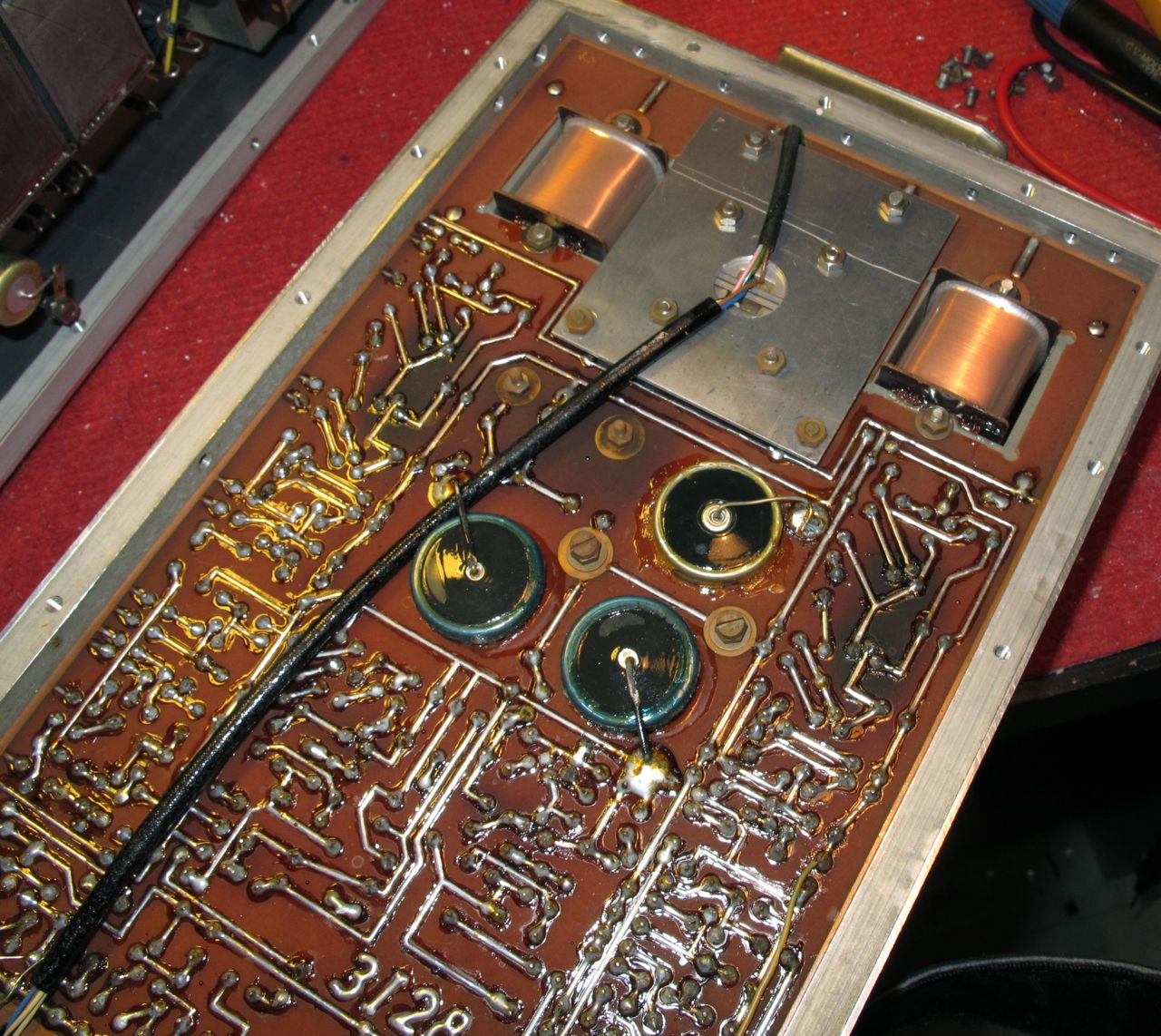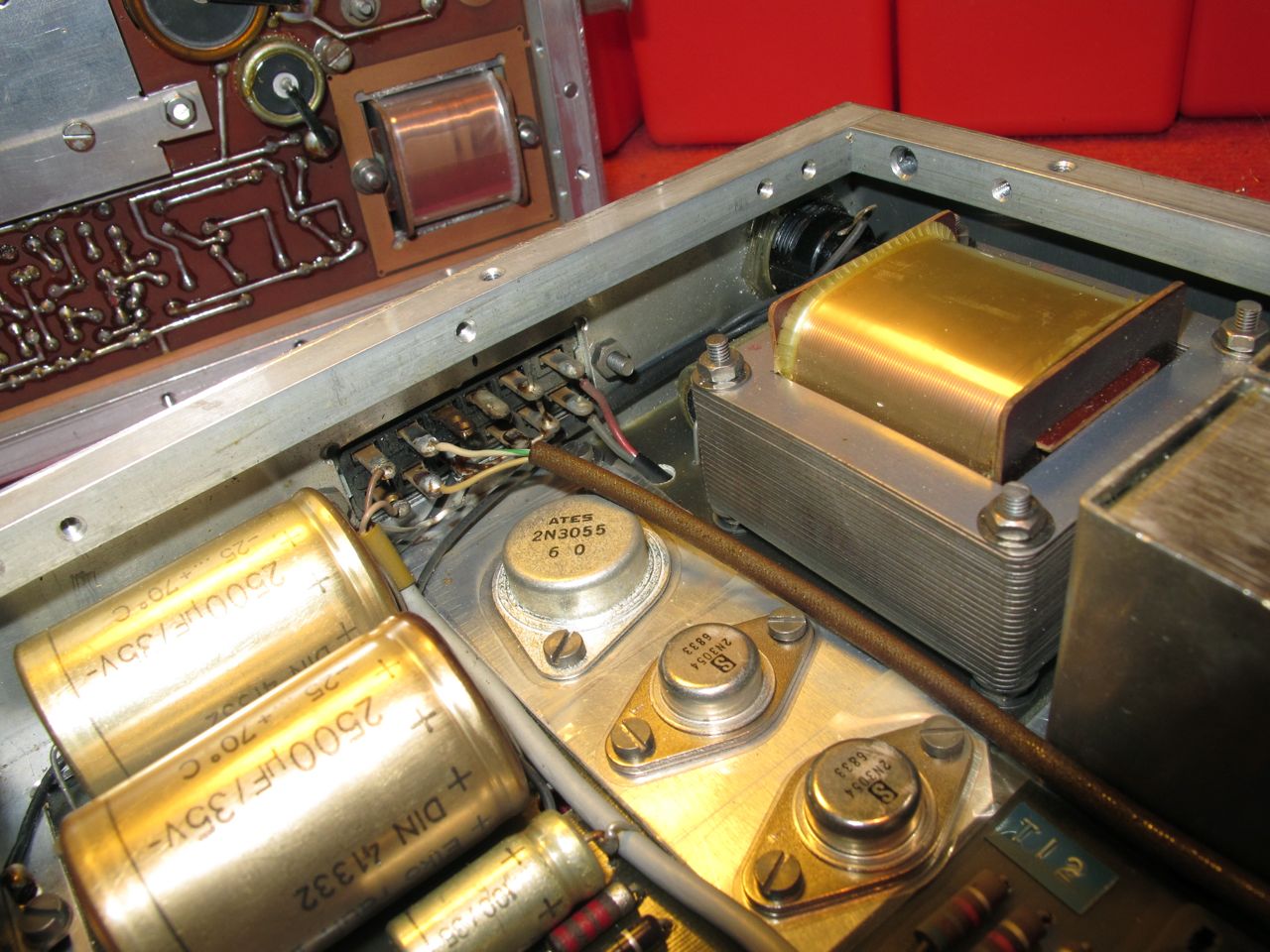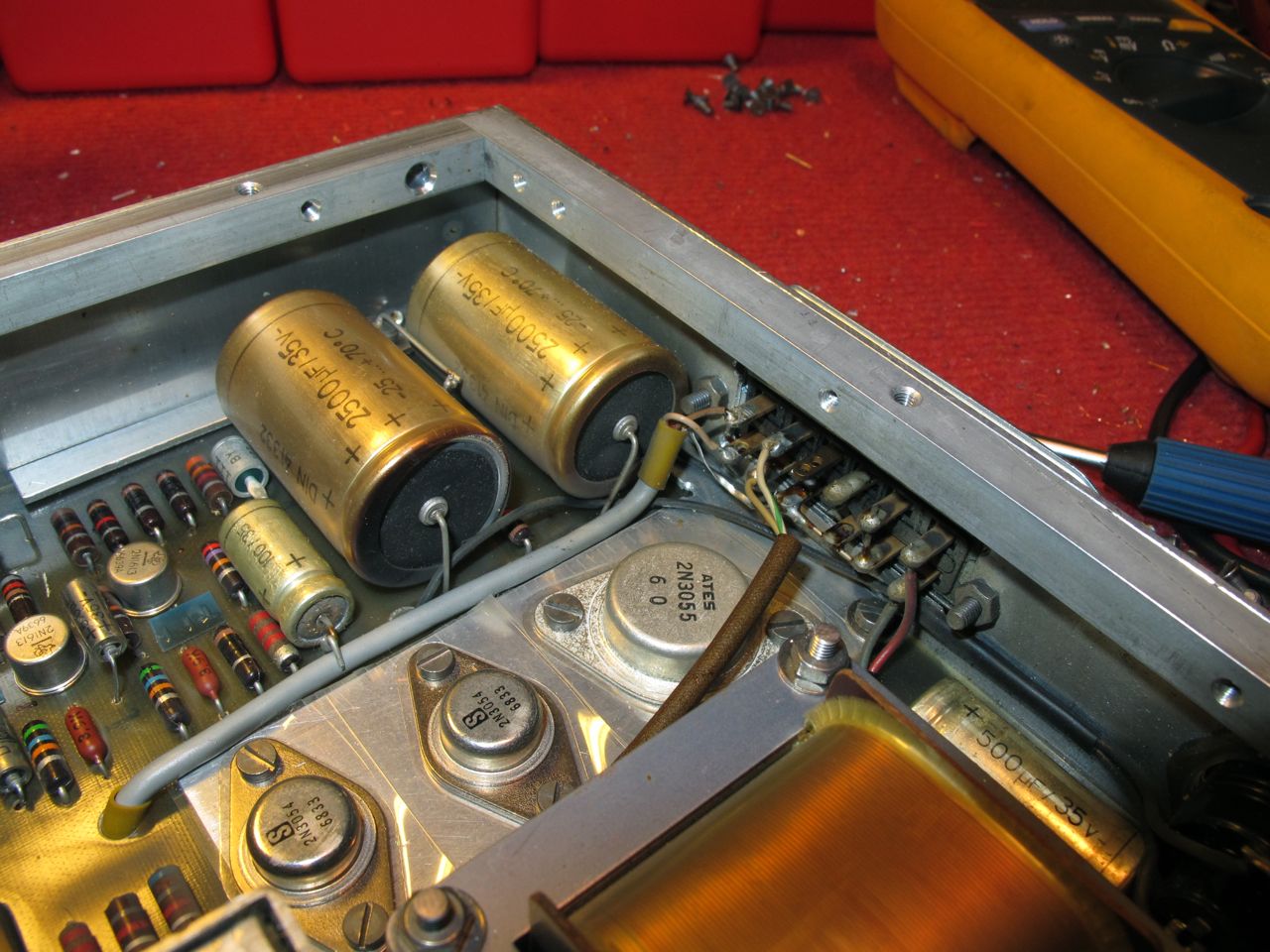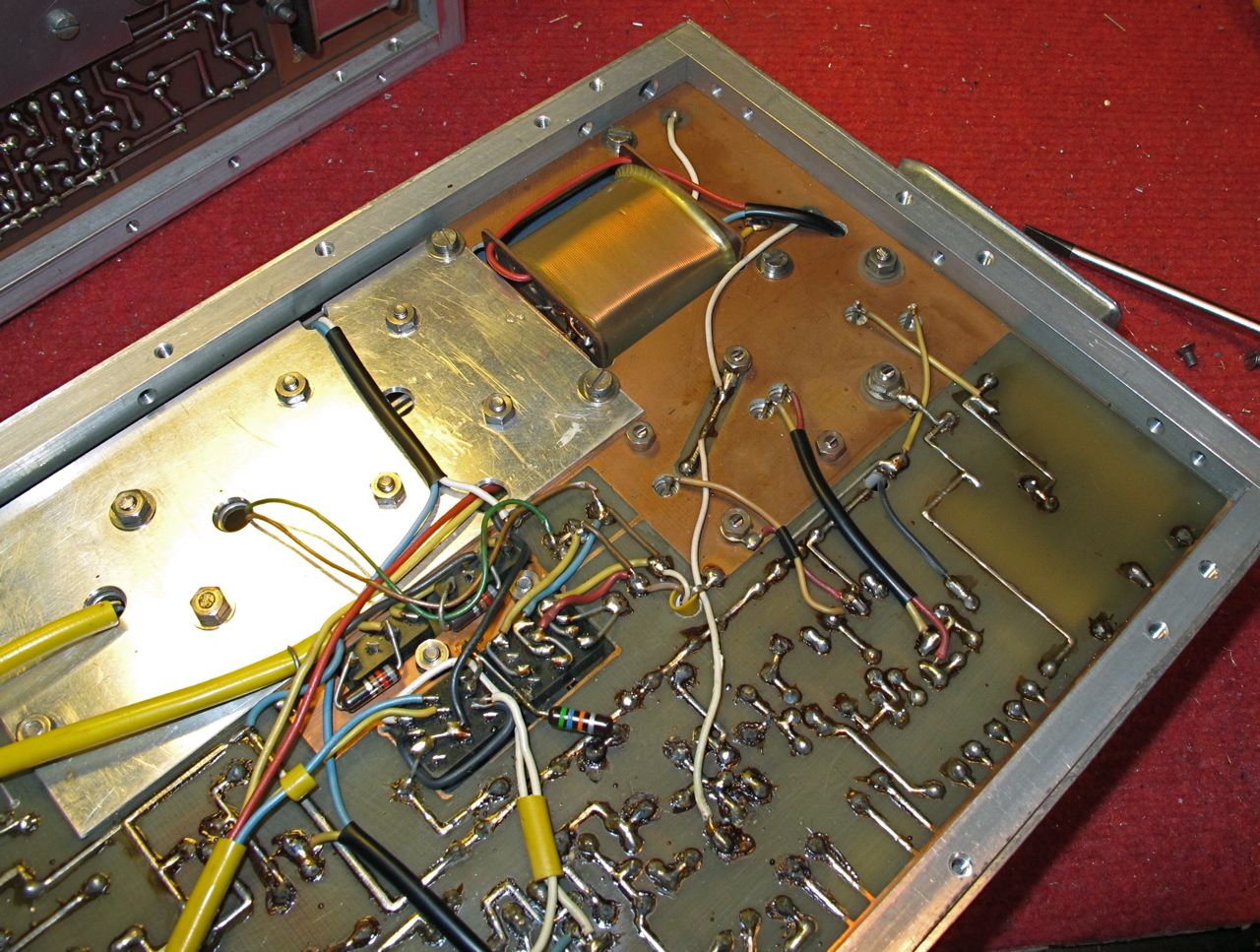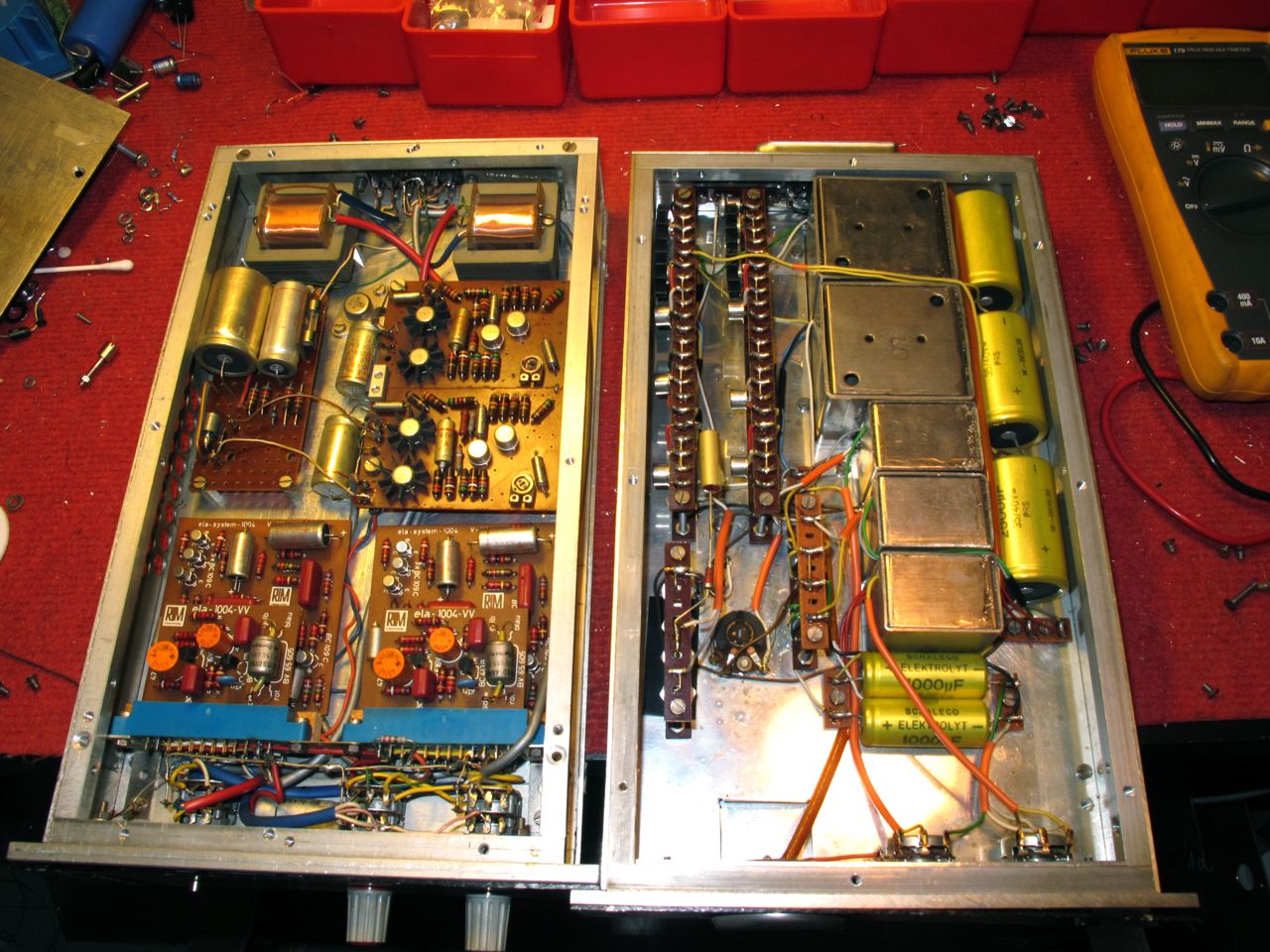So, i have had these modules for a very long time on my shelf and have been looking at them now and then but never made a good try to get them up and running.
The modules themseves must be from some kind of German modular mixer from the late 60´s and i have never seen anything like them.
They are massive (included a Neve 1272 style module for size comparison) and the buildquality is quite impressive, space was not an issue
Many modules have a symbol on the front that i have asked here about before but no one knew what it was then.
There are micpre/es, compressors, a tone generator, plate drivers and also a Vocoder among the modules that i have.
Would love to hear if you know anything about them.
But lets move on to the electronics.
I took a good look at them today and i can not figure out the power arrangement.
The connectors are the same 12 pin Tuchels as on V modules but not sure if they run on 220v or not.
Most of them have what looks like dual powertransformers (or possibly dual outputs) and there is also a separate powerfeed on pin 4A.
The "powertransformers" are connected to pins 6A + 6B (like the 220v on the V modules) and pins 5A + 5B or 3A + 3B depending on the module.
After the transformers there are what looks like output stages so maybe i am wrong about the power thing and there are dual outputs in the modules?
That would most likely be the most logical thing i guess but i am not sure, then there would be two inputs as well since there are two identical shielded cans, stereo?
The feed on pin 4A on all modules first goes to a 0,2A fuse, then to a powerdiode and electrolytics that are rated for 35v.
After that to a 2n3054 or 2n3055 transistor.
I guess my main question is where i should start to try to power them up.
Would 24v on pin 4A be a safe bet?
Several pictures below of three different modules.
First is a Micpre/eq
Second is a dual compressor
Third is another micpre/eq but quite different circuit than the first (this is unbranded but have a modelnumber).
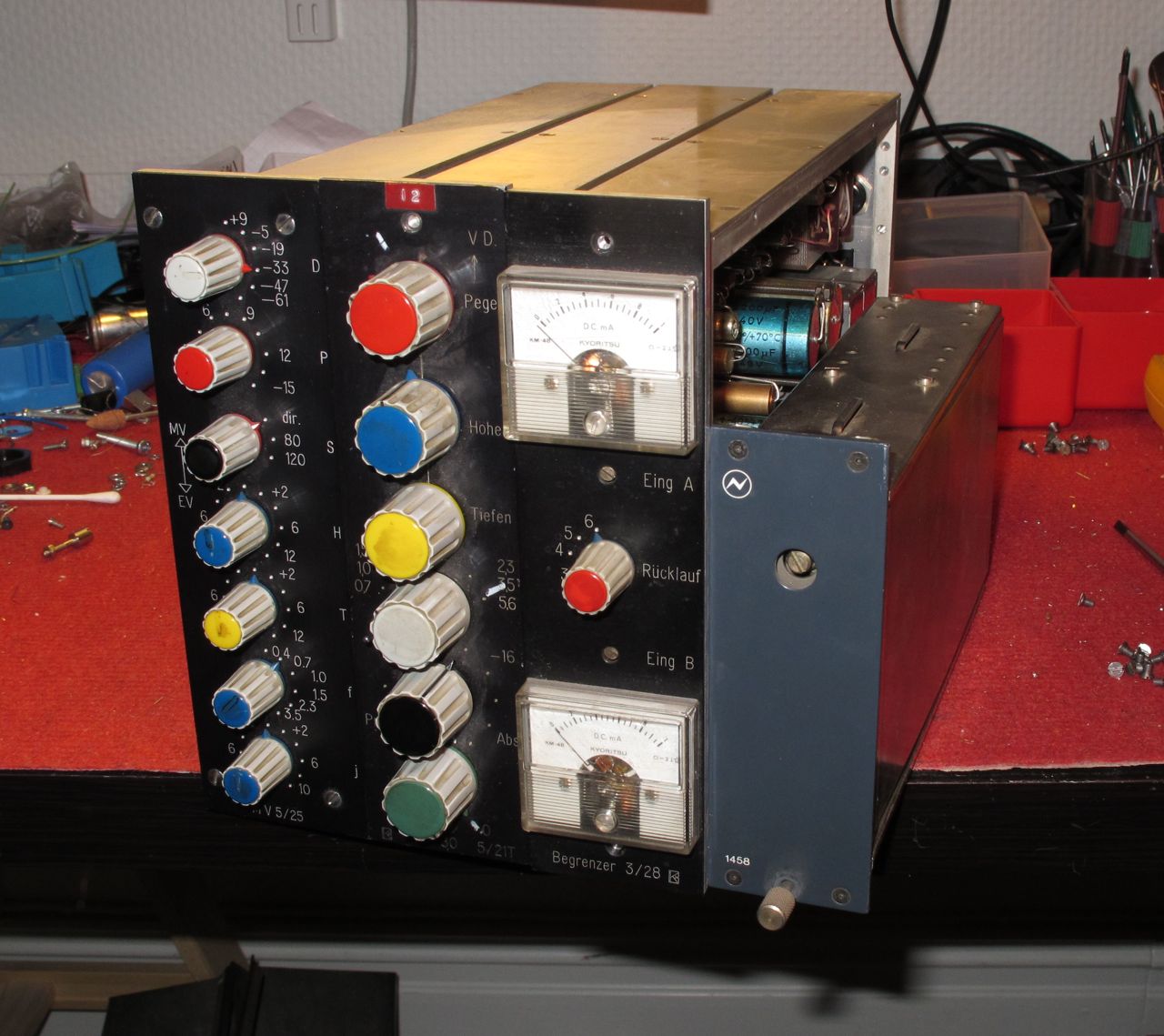
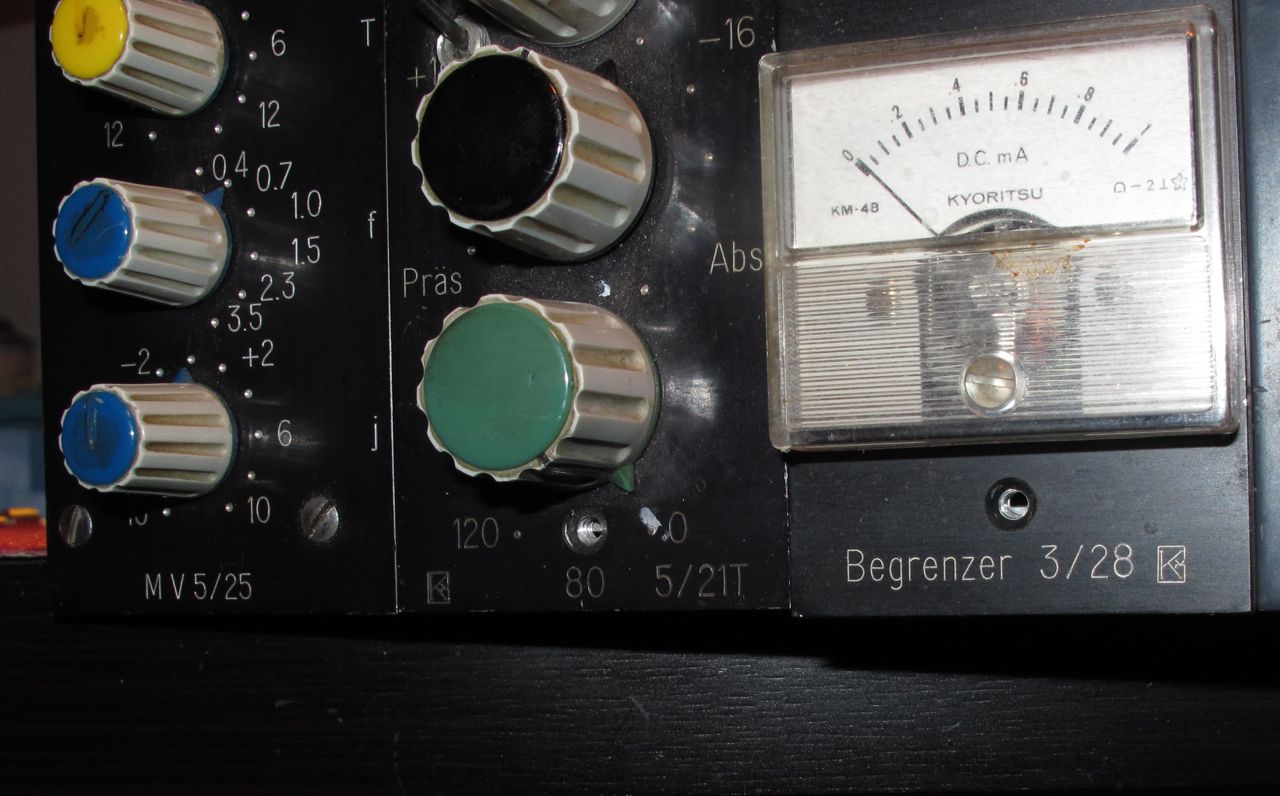
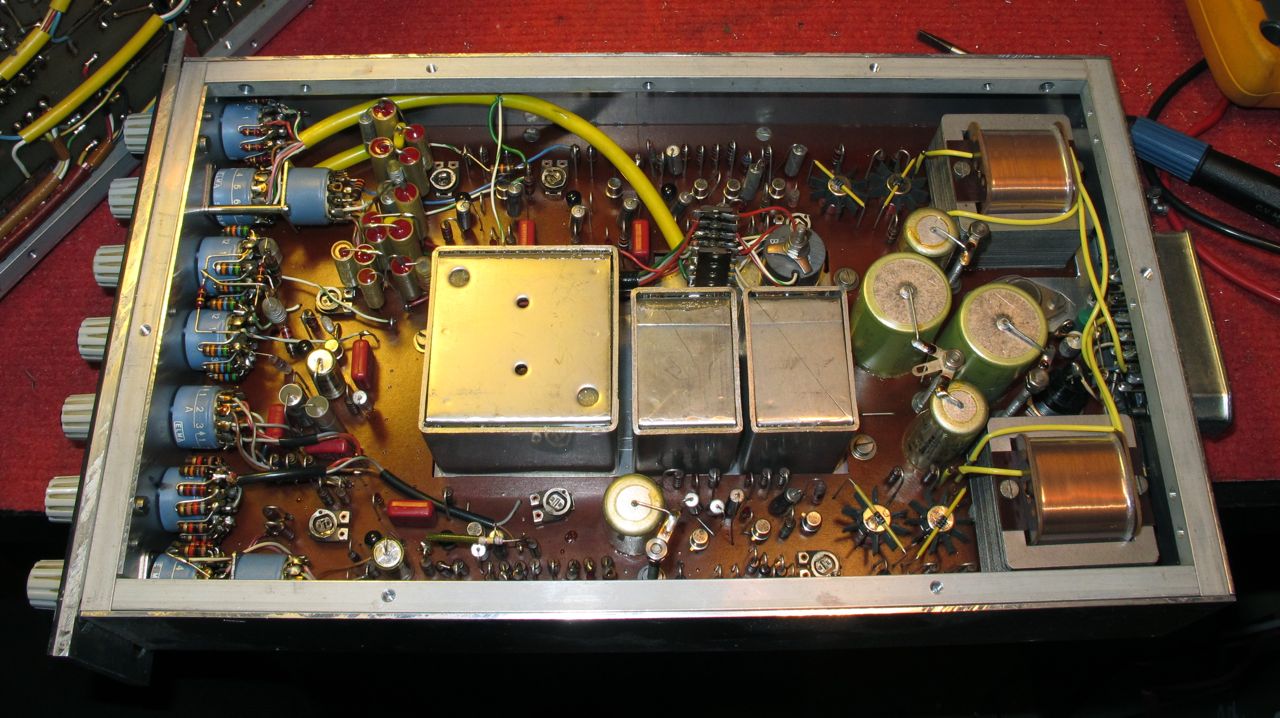
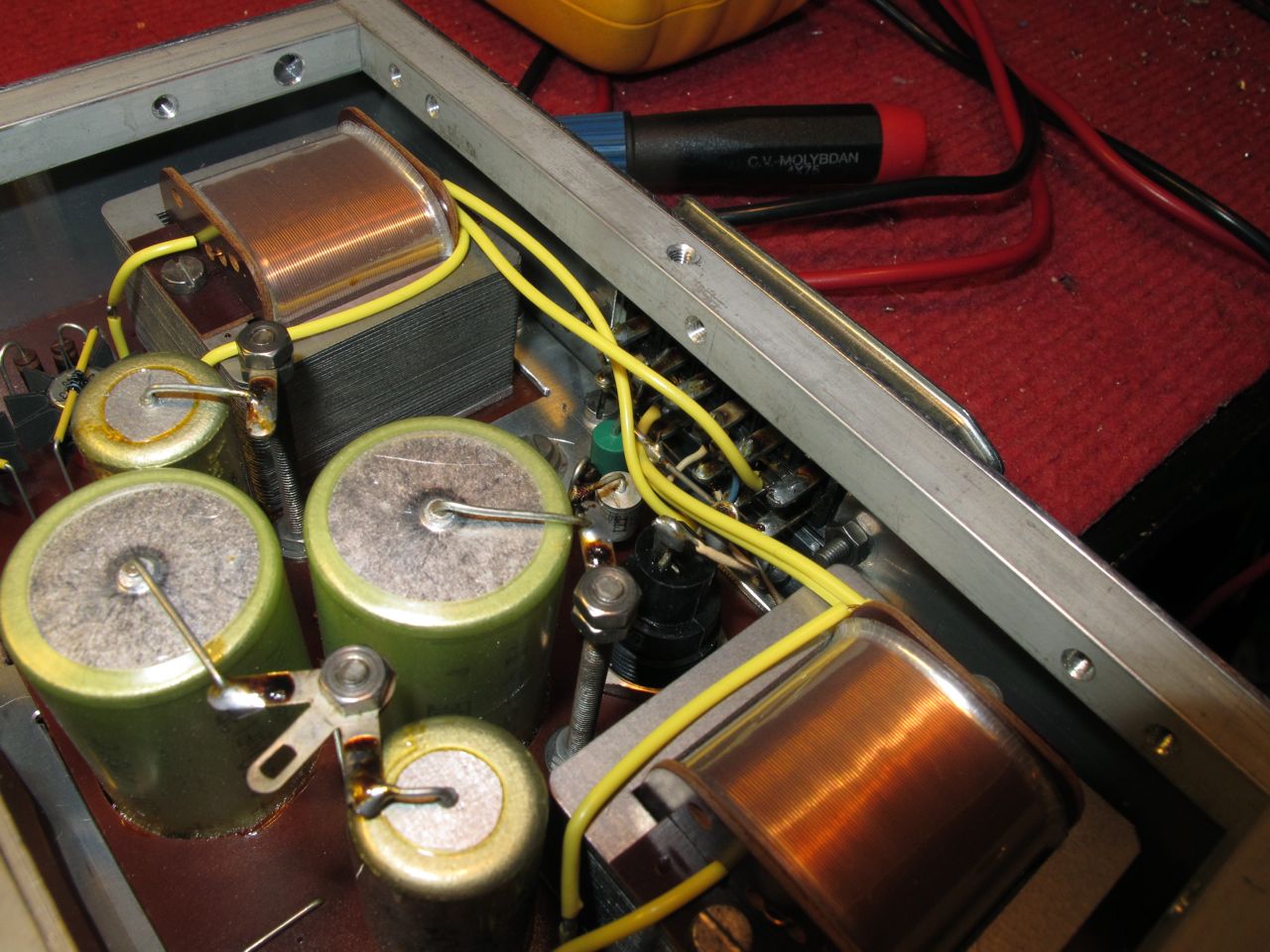
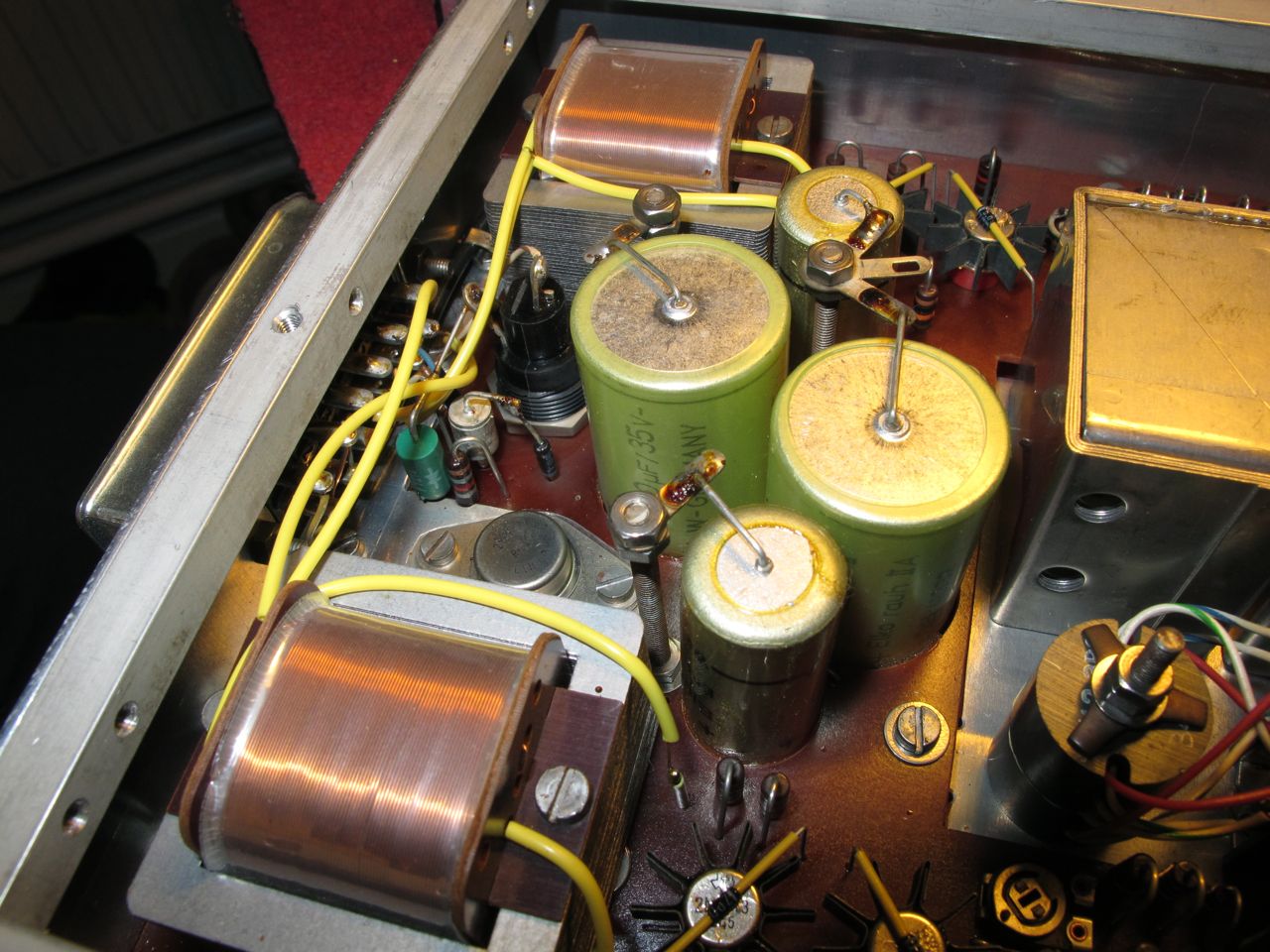
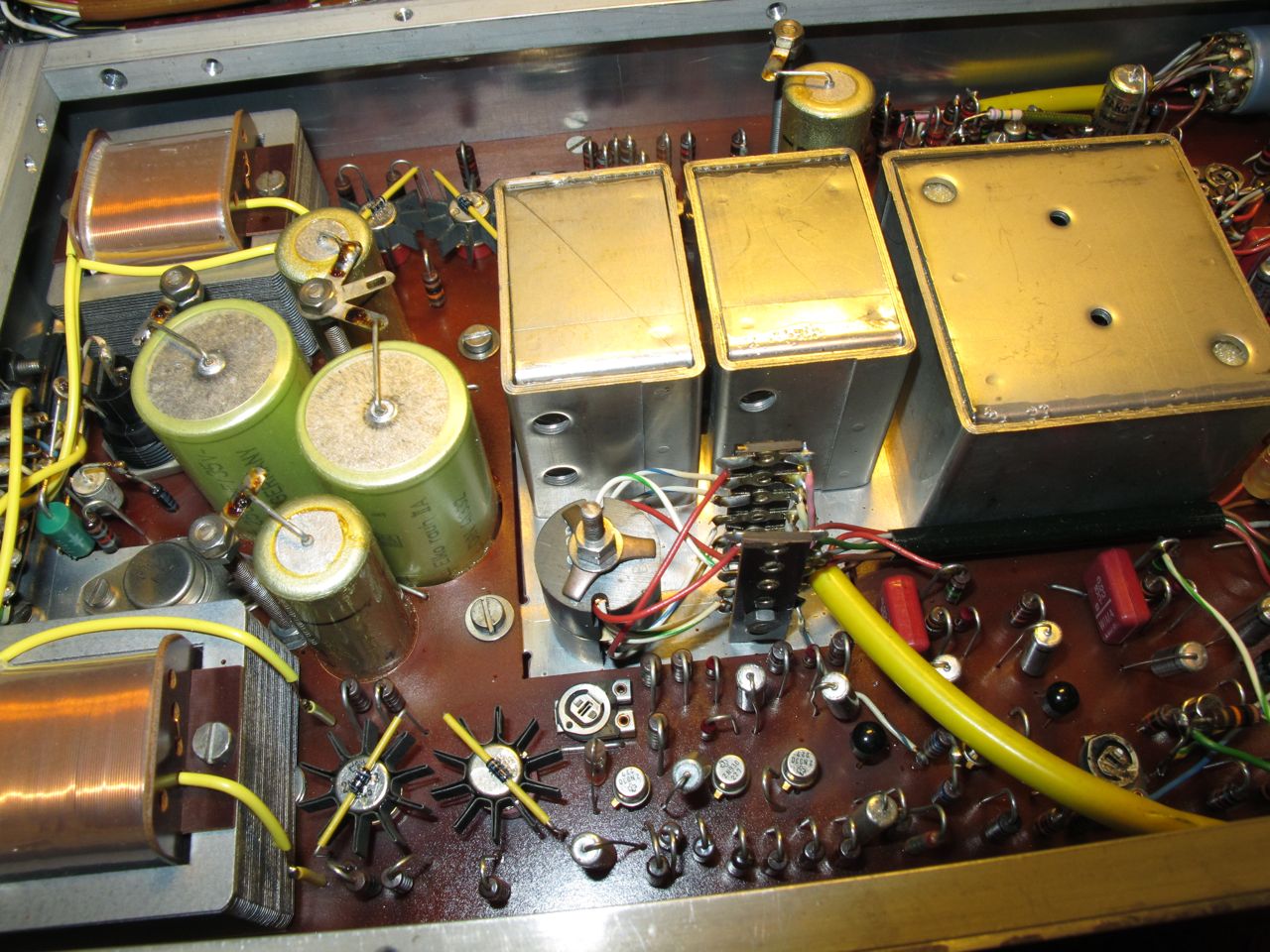
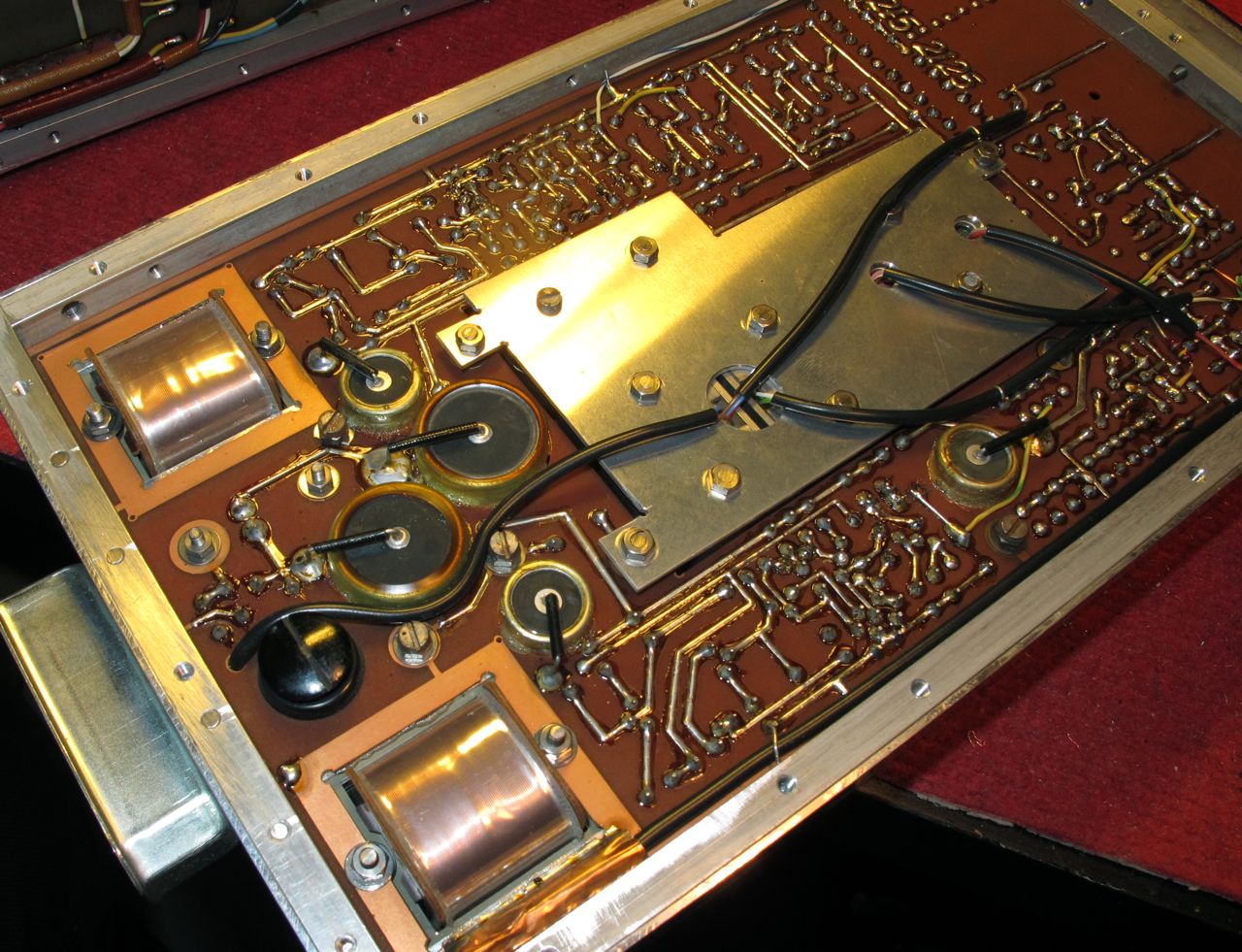
The modules themseves must be from some kind of German modular mixer from the late 60´s and i have never seen anything like them.
They are massive (included a Neve 1272 style module for size comparison) and the buildquality is quite impressive, space was not an issue
Many modules have a symbol on the front that i have asked here about before but no one knew what it was then.
There are micpre/es, compressors, a tone generator, plate drivers and also a Vocoder among the modules that i have.
Would love to hear if you know anything about them.
But lets move on to the electronics.
I took a good look at them today and i can not figure out the power arrangement.
The connectors are the same 12 pin Tuchels as on V modules but not sure if they run on 220v or not.
Most of them have what looks like dual powertransformers (or possibly dual outputs) and there is also a separate powerfeed on pin 4A.
The "powertransformers" are connected to pins 6A + 6B (like the 220v on the V modules) and pins 5A + 5B or 3A + 3B depending on the module.
After the transformers there are what looks like output stages so maybe i am wrong about the power thing and there are dual outputs in the modules?
That would most likely be the most logical thing i guess but i am not sure, then there would be two inputs as well since there are two identical shielded cans, stereo?
The feed on pin 4A on all modules first goes to a 0,2A fuse, then to a powerdiode and electrolytics that are rated for 35v.
After that to a 2n3054 or 2n3055 transistor.
I guess my main question is where i should start to try to power them up.
Would 24v on pin 4A be a safe bet?
Several pictures below of three different modules.
First is a Micpre/eq
Second is a dual compressor
Third is another micpre/eq but quite different circuit than the first (this is unbranded but have a modelnumber).










